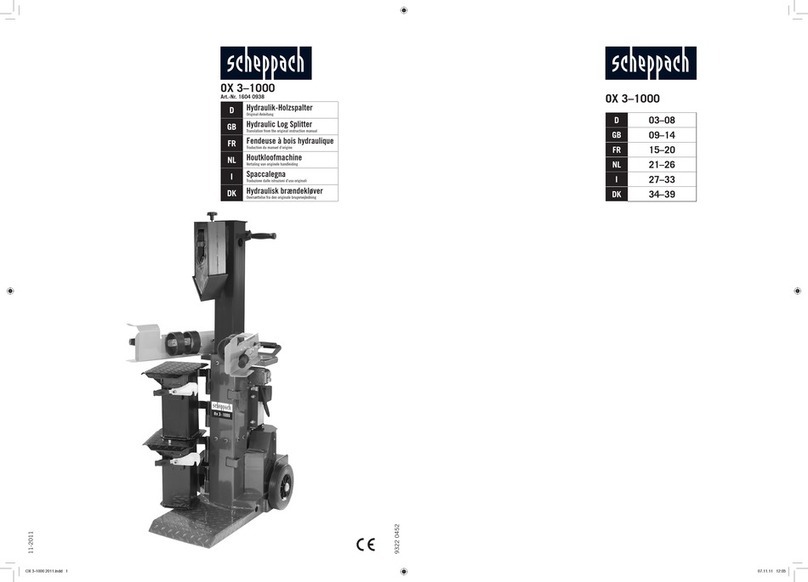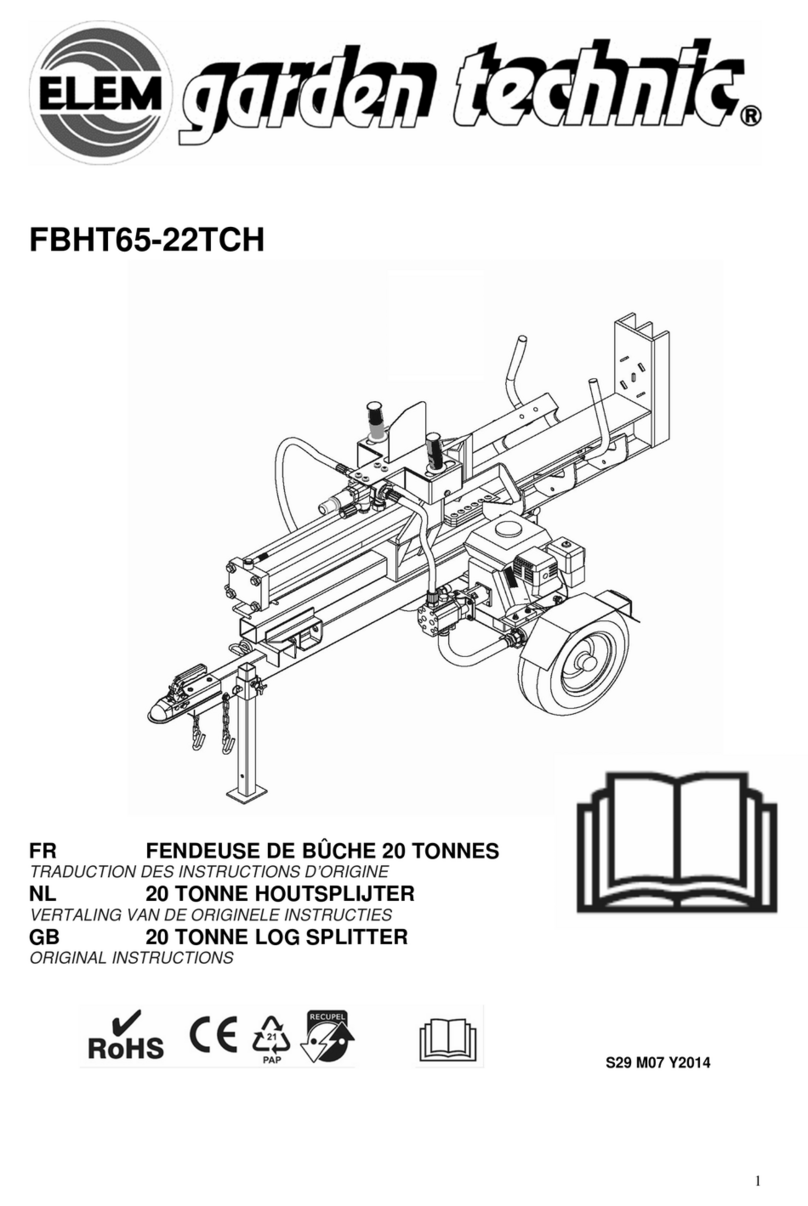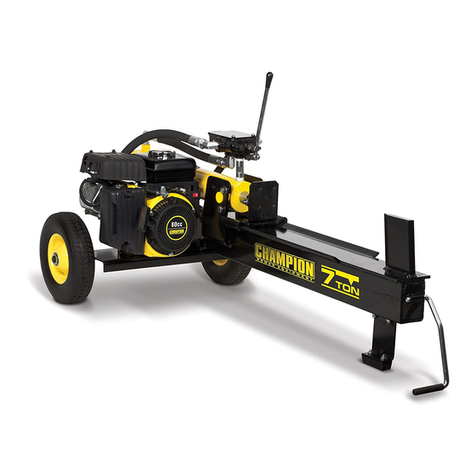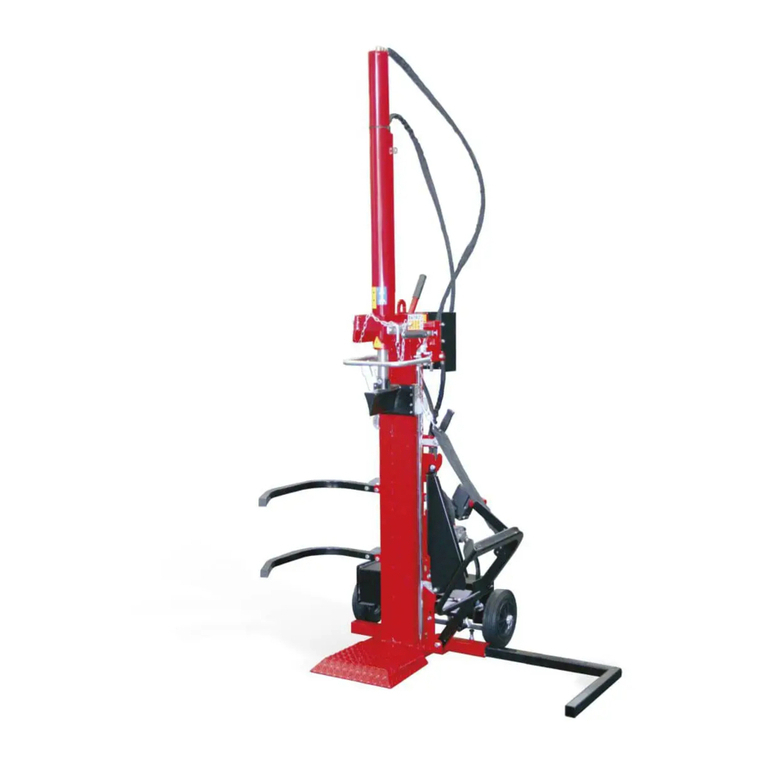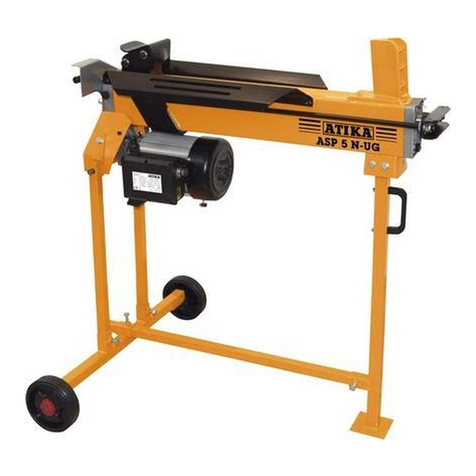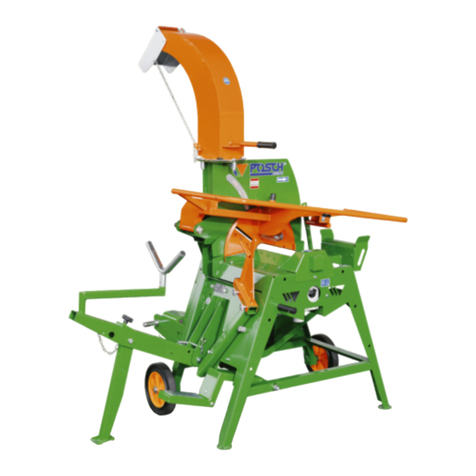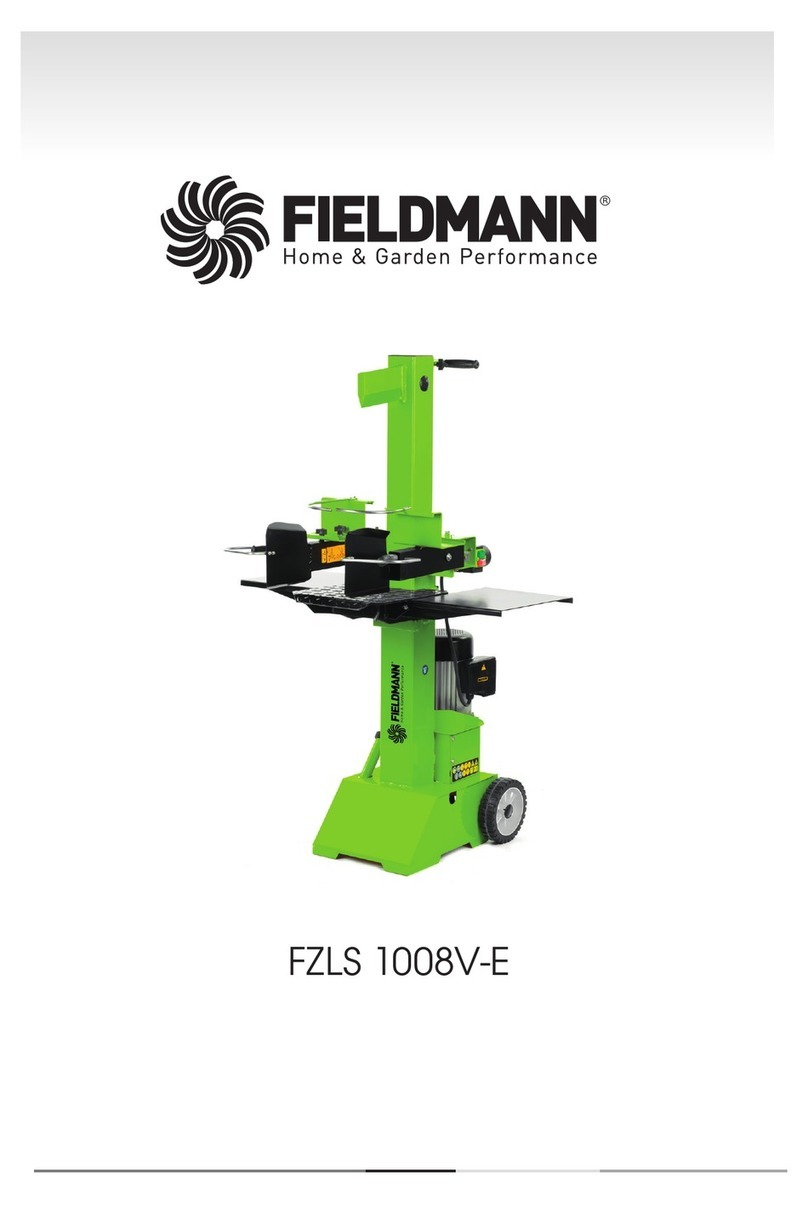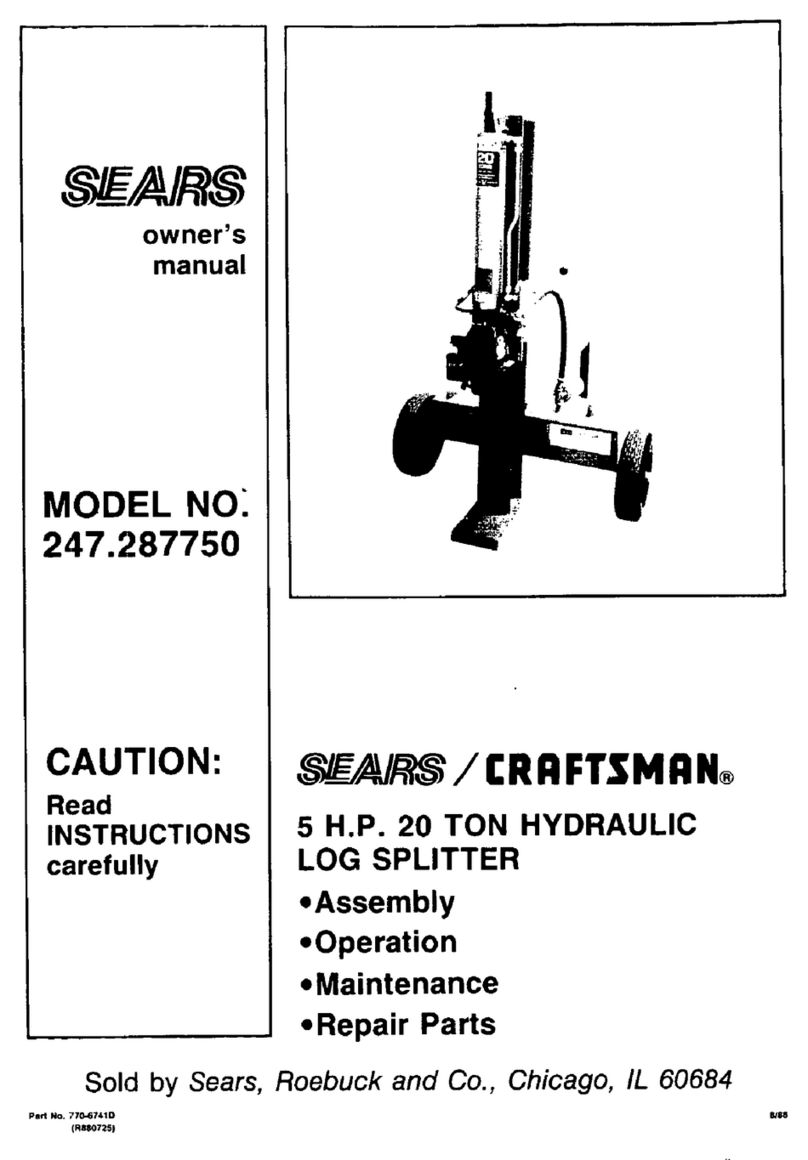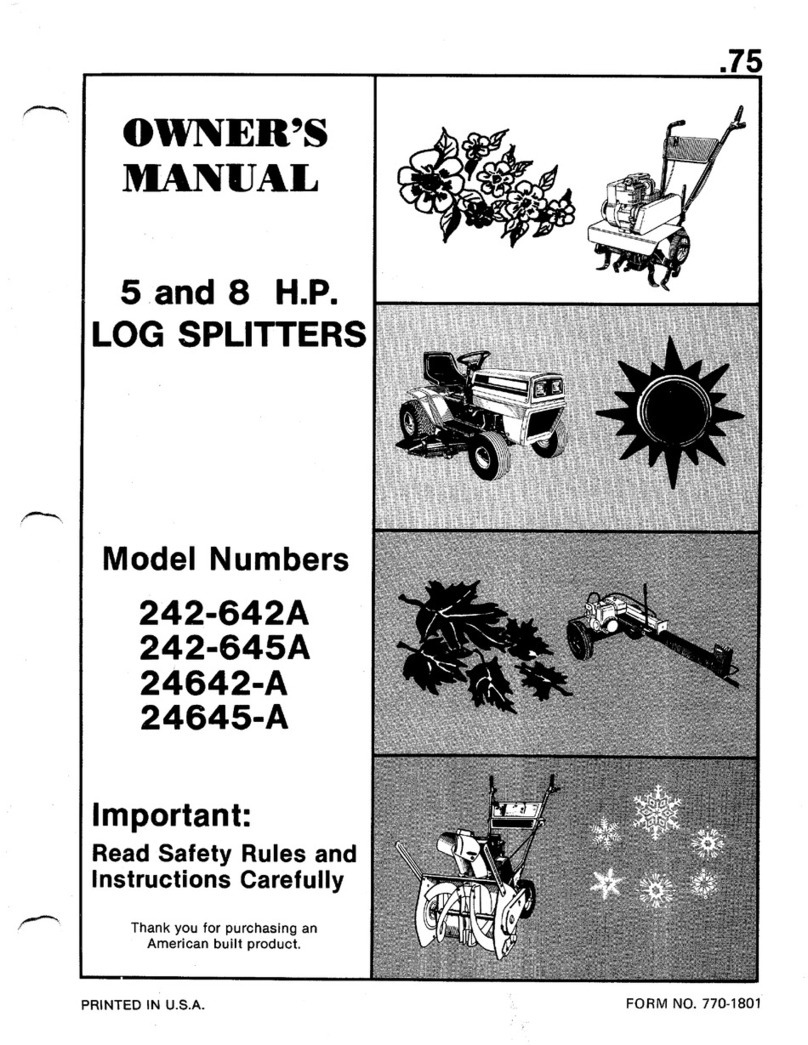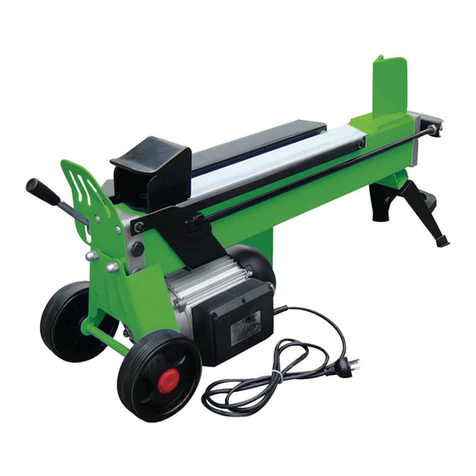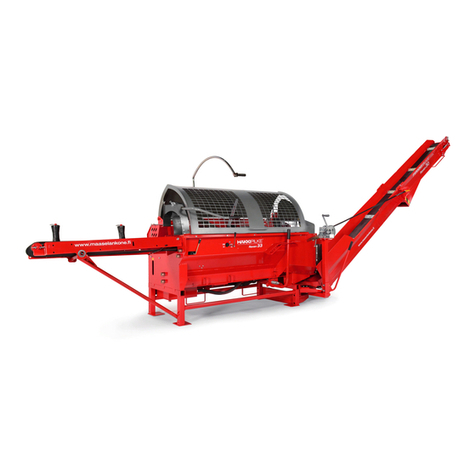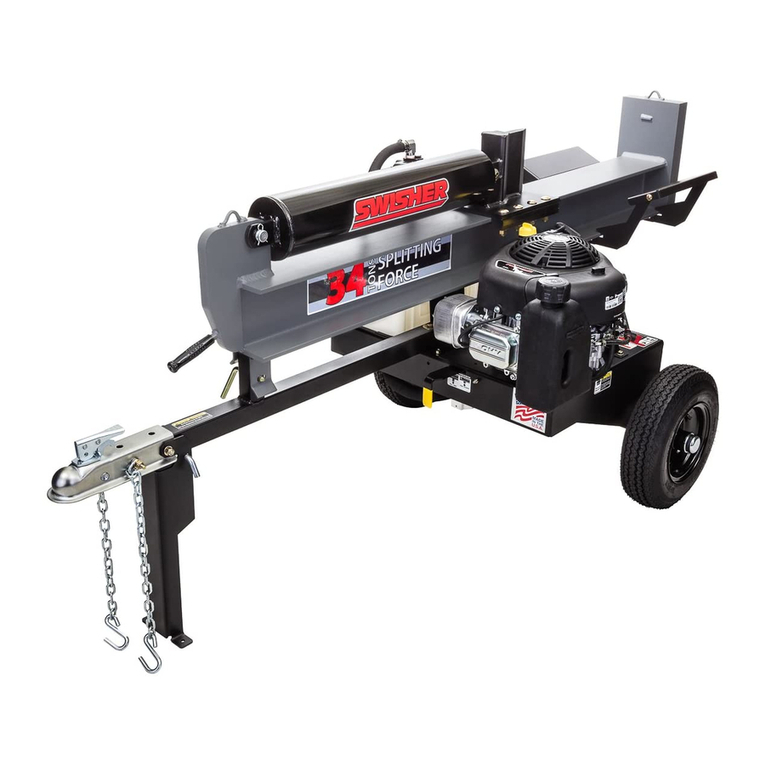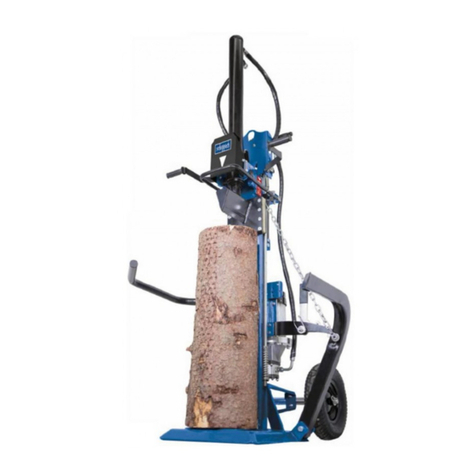
10
Fill if the oil is level is under the middle of the monitor.
Check the hydraulic oil level by the oil monitor.
Before Each Use-Inspection / Maintenance
Check the hydraulic system carefully:
1. Visually inspect all hoses, tubing, clamps/fittings, pump, and cylinder for cracks, fraying,
kinks, or other damage.
2. Check all components for oily residue, which may indicate a leak.
Do NOT operate the log splitter if there is any indication of damage or oily residue. Small leaks
in hydraulic lines can cause severe injuries and can also be an indication of catastrophic failure
in the near future. The life of hydraulic hoses may be from a few months to a few years,
depending on use and storage patterns.
WARNING:High fluid pressures and temperatures are developed in hydraulic log
splitters. Hydraulic fluid escaping through a pin hole sized opening can burn or
puncture skin, resulting in wounds that could cause blood poisoning, infection,
disability, gangrene, amputation, or death. Therefore, the following instructions should
be heeded at all times when inspecting or servicing the hydraulic components of the log
splitter:
Stop the engine, disconnect the spark plug, and move all control valve handles back
and forth to relieve pressure before changing or adjusting hydraulic system
components such as hoses, tubing, fittings or other components.
NEVER check for leaks with your hand. Leaks can be located by holding a piece of
cardboard or wood (at least two feet long) with your hand at one end and passing the
other end over the suspected area (wear eye protection). Look for discoloration of the
cardboard or wood.
NEVER adjust the pressure setting of the pump or valve.
If injured by escaping fluid, no matter how small the wound is, see a doctor at once.
A typical injection injury may be a small puncture wound that does not look serious.
However, severe infection or reaction can result if proper medical treatment is not
administered immediately by a doctor who is familiar with injection injuries.
Inspect and perform engine maintenance as directed in the engine manual.
8. Spark arrestor
muffler
If the engine is equipped with a spark arrestor muffler, clean and inspect it regularly
(follow spark arrestor manufacturer's service instructions).
Replace if damaged.
Make sure tires are fully inflated and in good repair if you will be towing the splitter.
See tire sidewall for recommended tire pressure.
WARNING:
Do not over-inflate tires. Serious injury can occur if tire explodes.
When seating a bead after repair, do not exceed 30 PSI. Pressures higher than 30 PSI can
cause the tire and wheel to rupture and explode.
Replace all guards and shields after servicing the log splitter.
